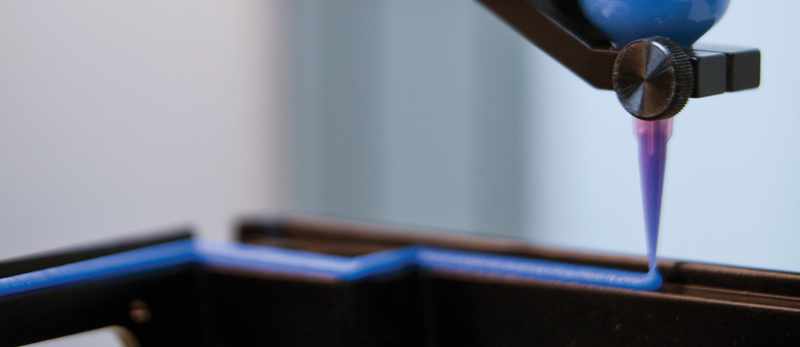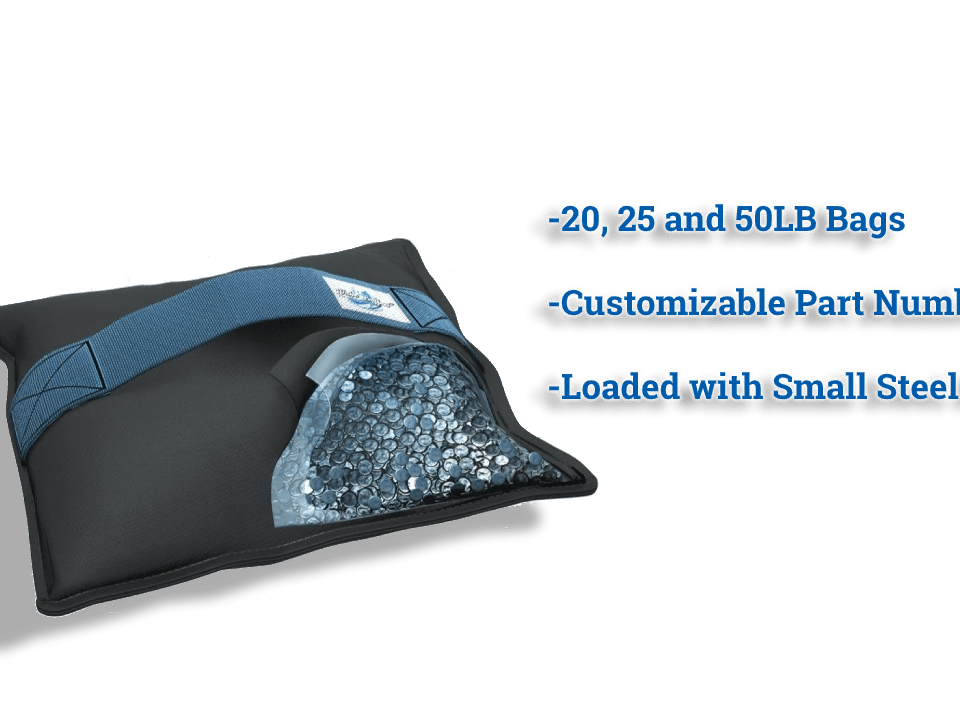
Thermal Interface Materials
May 15, 2020
Rubber Chemical Compatibility Chart
May 27, 2020
Thermal Interface Materials
May 15, 2020
Rubber Chemical Compatibility Chart
May 27, 2020Key Properties of Thermal Interface Materials
Properties of Thermal Interface Materials can be broken down into 3 Key Properties. Thermal Properties, Electrical Properties, and Elastomeric Properties. This guide gets down to the science and testing of those properties. We borrowed it from our partners at Parker Chomerics.
THERMAL PROPERTIES
Thermal Impedance
This is the measure of the total resistance to the flow of heat from a hot surface through an interface material into a cold surface.
To understand thermal impedance, we must first understand thermal resistance and thermal contact resistance.
- Thermal resistance is another inherent thermal property of a material, and is the measure of how a material of a specific thickness resists the flow of heat. Since Thermal Interface Materials (TIM) thickness is directly related to the resistance, thinner TIMs transfer heat more efficiently than thicker ones.
- Contact resistance is specific to the interfaces where a TIM meets the heat-generating component and the heat sink. In reality, neither of these components are perfectly flat or smooth, therefore these surface irregularities create micro-air voids when in contact with the interface material, reducing the effectiveness to transfer the heat (air is a very poor thermal conductor).
Therefore, the thermal impedance of a material is the sum of its thermal resistance and all contact resistances. When a material’s thermal impedance is lower, the material is a better thermal conductor in that application. Based on this, it is understandable that factors such as surface roughness, surface flatness, clamping pressure, presence of adhesive, non-homogeneous, and material thickness all have large impacts on the material’s thermal impedance. Thus, thermal impedance is a better “real world” thermal property, as it accounts for more variables specific to the application.
Thermal impedance is measured according to the ASTM D5470 test method. Although the current version of this method is specific to high durometer insulating pad materials tested at high clamping forces, the method has been successfully adapted for use with low durometer materials as well as fluid compounds.
Thermal impedance can be measured using ASTM D5470 at several clamping forces to generate a pressure versus thermal impedance plot. This type of data can be used to generate information about the ability of a material to conform to surfaces to minimize contact resistance. Care must be taken with this type of data because contact resistance is also highly influenced by surface characteristics. To minimize the impact of test equipment variations, this type of work is best performed with the same test surfaces for all materials being tested.
Thermal Conductivity
Thermal conductivity is a material property and describes the ability of the given material to conduct heat. Therefore, when a material’s thermal conductivity is high, the material is a better thermal conductor. This property is independent of material size, shape or orientation in a homogeneous material, and because of this, thermal conductivity is an idealized value. Thermal impedance data measured according to ASTM D5470 can be used to calculate the thermal conductivity of an interface material.
Electrical Properties
Voltage Breakdown
This is a measure of how much voltage differential a material can withstand under a specific set of test conditions. This property is usually measured using ASTM D149 where a test specimen is subjected to ramped alternating current voltage such that dielectric failure is reached within 20 seconds after the start of the test. Five specimens are tested and the average voltage breakdown is calculated and reported. The value is an average, not a minimum. Voltage Breakdown can be converted to Dielectric Strength by dividing the voltage breakdown value by the specimen thickness where the dielectric failure occurred. This test is an indication of the ability of a material to withstand high voltages, but does not guarantee how a material will behave over time in a real application. The value is influenced by several factors. Humidity and elevated temperature will reduce the voltage breakdown because absorbed water will degrade the electrical properties of the material.
The size of the test electrode will affect the observed breakdown voltage. A larger test electrode will typically yield a lower breakdown voltage. The presence of partial discharge, as well as mechanical stresses imposed on the interface material, also reduce voltage breakdown.
Volume Resistivity
Volume resistivity is a measure of the bulk electrical resistance of a unit cube of a material. When determined per ASTM D257, volume resistivity can give an indication of how well an interface material can limit leakage current between an active component and its grounded metal heat sink. As with voltage breakdown, volume resistivity can be significantly lowered by humidity and elevated temperature.
Elastomeric Properties
Thermal Interface materials exhibit properties typical of highly filled elastomers, namely compression deflection, compression set and stress relaxation.
Compression Deflection
Compression deflection refers to resultant forces a material exerts while being deflected. As a compressive load is applied, the elastomer material is deformed but the volume of the material remains constant. The compression deflection characteristics can vary, depending on part geometry (i.e., thickness and surface area), rate of deflection, size of probe, etc.
Stress Relaxation
When a compressive load is applied to an interface material, there is an initial deflection followed by a slow relaxation process whereby some of the load is relieved. This process continues until the compressive load is balanced by the cohesive strength of the material.
Compression Set
Compression set is the result of stress relaxation. After a material has been subjected to a compressive load for an extended time, part of the deflection becomes permanent and will not be recoverable after the load is reduced.
Learn More
If you’d like to learn more about Thermal Interface Materials like Gap Pads, Fillers, or Tapes; please feel free to contact an Application Engineer at (602) 437-1532 or email us at info@stateseal.com.

